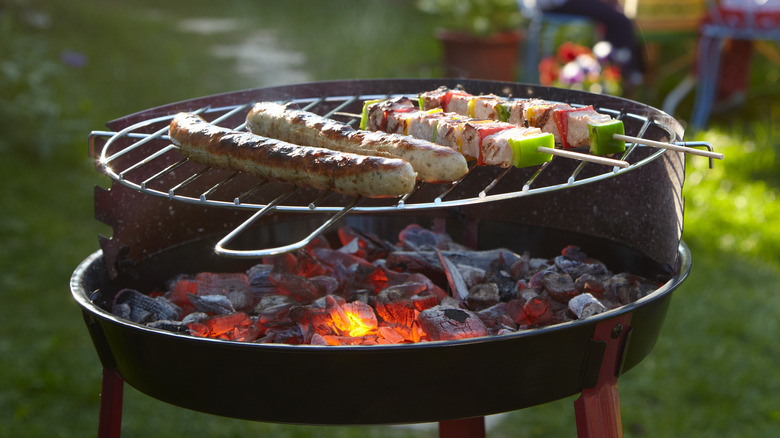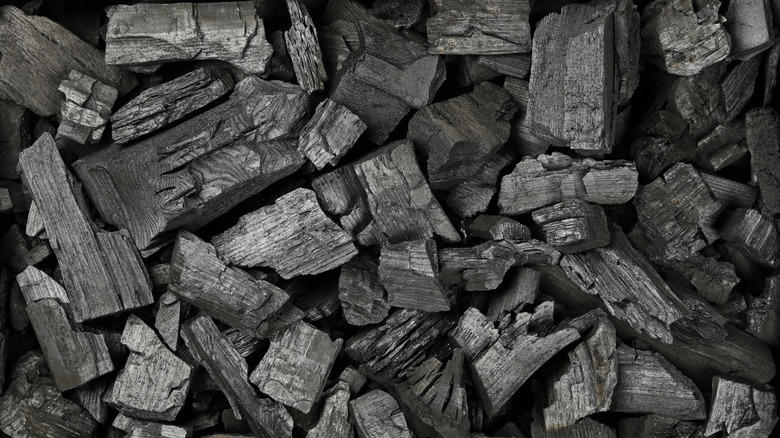The Best Type Of Charcoal To Use For Eco-Friendly Grilling
Nothing beats the taste of the char from a charcoal grill and the accompanying smell that encompasses your backyard. While the flavor those hot coals impart on food generally beats out the work of a gas grill, gas grills are several steps ahead in terms of their environmental friendliness. Those burning red briquettes and their ensuing smoke come with a pretty large carbon footprint as they give off more carbon — about three times the size of a gas grill's shoe.
All is not lost, however. You don't have to pack up your charcoal grill and head for the gas or stove. There are a bunch of types of charcoal available, and one of them — lump charcoal — is the most eco-friendly of the lot. Lump charcoal is just hunks of roasted, unprocessed hardwood. They are not doused in chemicals to promote ignition nor are they molded into a uniform shape. It burns cleaner and leaves behind less ash than traditional charcoal briquettes. For an added protective measure, you can reach for a greener, high-quality brand that labels its lump coal as not containing contaminants. There are varieties that are organic and sustainably sourced, as well as charcoal made from bamboo and coconut shells.
How to ensure an eco-friendly barbecue
The only downside to lump coal is that it also burns hotter and more unevenly than briquettes. But that's a small price to pay to cut down on emissions. Another measure you can take to ensure a greener grill with charcoal is to skip the lighter fluid. Not only is it toxic to consume, but when burned the smoke gives off hydrocarbons, which contributes to air pollution. You can look for an all-natural lighting fluid or make your own kindling from twigs or crumpled newspaper. If you go the kindling route, you can use a charcoal chimney starter for airflow, which will help the lump coal light faster and more evenly.
As for traditional charcoal briquettes, they are made from sawdust, wood scraps, and other wood byproducts — essentially, whatever happens to be lying around. The scraps are ground and then shaped into small pillow-shaped briquettes. They often add chemicals to improve their burning potential. Once lit on fire, those chemicals and impurities are released into the environment and are not the best for our planet (or your body). In addition, they have been found to include plastic, resin, and metal.

